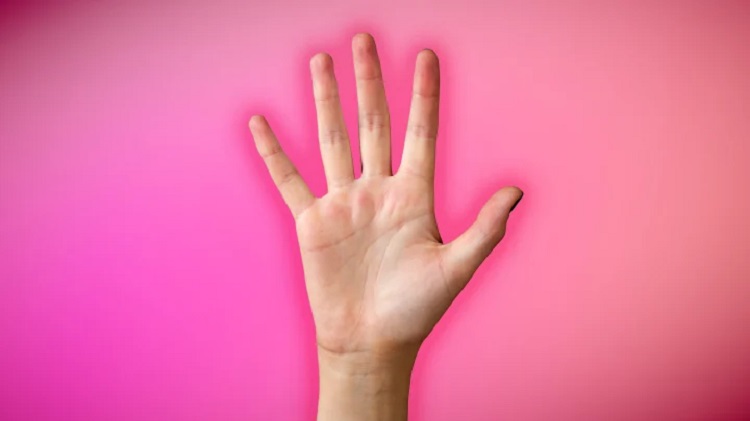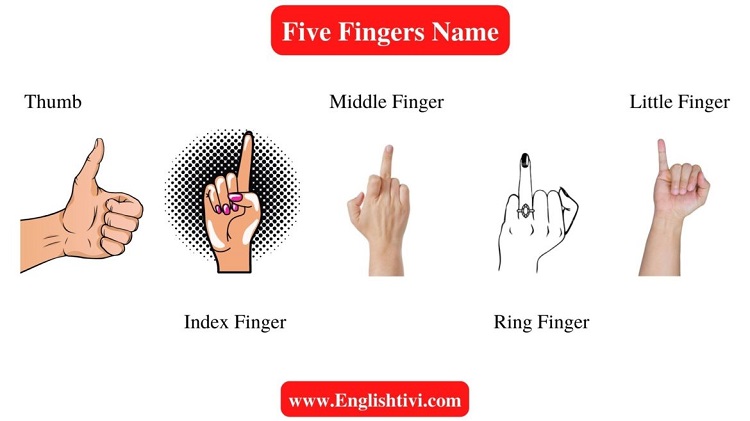
Have you ever wondered about what our finger names are? Learning the anatomy of the finger is not as difficult as learning the anatomy of the hand bone. But we shouldn't underestimate its importance in our day-to-day lives.
An excellent technique to comprehend the human body is to learn about the various finger names and finger structures. Since we only have one body, taking care of it entails understanding which areas require extra care.
The hand contains about 27 bones. The trapezoid, trapezium, scaphoid, capitate, radius, ulna, carpals, metacarpals, and phalanges bones are included in this. The distal interphalangeal, proximal interphalangeal, interphalangeal, metacarpophalangeal, carpometacarpal, and trapeziometacarpal are additional hand joints.
The hand contains three different kinds of bones. With the exception of the thumb, each finger has three phalanges bones: the distal, middle, and proximal. Five bones make up the metacarpal bones, which are located in the middle of our hands. The wrist's structural elements are the carpal bones. This is so that the ulna and radius bones, which are arm bones, may attach to these carpal bones.
Each finger has three phalange bones inside. The thumb, however, only has two phalanges. The terms proximal, middle, and distal phalanx are used to refer to these three bones. Extensors, the collateral ligament, the flexor digitorum profundus, and the flexor digitorum superficialis are a few of the tendons that hold the three bones together.
Finger injuries are common since there aren't many things that hold together such a crucial portion of our body. As a result, finger trauma crises are the most frequent kind of injury treated in hospitals.

Five Finger Names | Photo file: englishtivi.com
Scientific finger names, their common names, their most common injuries, the uses of each finger, and their cultural significance are discussed below:
Thumb
The thumb is the finger name of the first finger. Although this finger's medical name is pollex, humans have been referring to it as the thumb since at least the 12th century. The Proto-Indo-European word "tum," which means "to swell," is where the word "thumb" originated. The thumb is the smallest and widest finger of all.
It has a metacarpal, distal phalanx, and proximal phalanx, just like the other fingers. The thumb is also utilized in a manner similar to that of other fingers. The role of the thumb is to counteract the motion of the other fingers. This enables us to specifically manipulate other things.
Some people have an additional thumb. Polydactyly is the name of this genetic condition.
The thumb can be used for a variety of purposes. However, it is also frequently used in the "thumbs up" signification. The thumbs-up sign denotes approval of the situation or request. As a signal to free the men still standing in the gladiator arena, it was first used in antiquity. Pilots used the sign to indicate that they were prepared for takeoff during World War II, which led to its evolution.
Index Finger
The index finger is one of the most interesting finger names. The word "index" means "to exhibit," and it is used to point at objects. One of the most used fingers is the index finger, which is in the middle. It is the hand's most flexible and sensitive finger, often known as the forefinger, first finger, pointer finger, or trigger finger. Most people naturally use their index fingers, which are typically shorter than their middle fingers.
Most people point and touch objects with their index fingers. The majority of the time, emotions are expressed using the index fingers. The index fingers can also be used to convey authority. Some people point with their index fingers to give instructions.
Islam uses the index finger as a symbol of their religion as well. In Islam, the index finger is referred to as the Tawhid, which refers to Allah as the complete being and the only god who exists.
Middle Finger
The third finger's name is the middle finger. The middle finger commonly referred to as the long finger or tall finger is typically the longest finger on a human hand. Apart from the index finger, it is one of the most flexible fingers, but it is also the most easily damaged finger.
The middle finger is typically primarily used for insults, unlike the other fingers. You are representing the male genital organ when you raise your middle finger and curl the others. The testicles are symbolized by the hand, while the finger is a representation of the penile shaft.
The Romans were among the first cultures to use the middle finger. The German tribesmen frequently gave the middle finger to the Roman troops, according to the Roman historian Tacitus.
Ring Finger
The ring finger is the most intimate of the fingers, and it also has the only finger name that actually refers to its function. The least flexible digit is the ring finger, which is seen between the little and middle fingers. The reason why the ring finger was chosen in particular for rings is still a mystery to historians.
The left ring finger was thought to be directly related to the heart by the Ancient Romans. As a result, they gave this connection the name "vena amoris," or "vein of love." This led to the widespread belief that marriages using rings on the left hand symbolized eternal love. This custom was first created by Romans in the eleventh century, and only the bride wore it. Eventually, the rings were also worn by the men.
Little Finger
The last on our finger names is known as the little finger. The baby finger, pinky finger, and pinkie are further names for the little finger. To the naked eye, the little finger may seem to be useless, but it actually holds 50% of our hand's strength. As a result, losing your finger significantly reduces the strength of your hands.
The term "pinkie" was originally used in Scotland around 1808 and is derived from the Dutch word "pink," which means "little finger."
Chinese people use the finger as insulting. Raising your little finger in their direction expresses distaste. The same is valid in Russia, where having a little penis might be symbolized by the pinkie finger.
Signet rings are worn on the little finger in the UK, Australia, and other European nations. These rings are worn by men on their left little fingers as a symbol of their regal position.
Not only important to learn about the different finger names, the anatomy of the finger, and their different uses and background. Also crucial is spreading knowledge on how to take care of them.